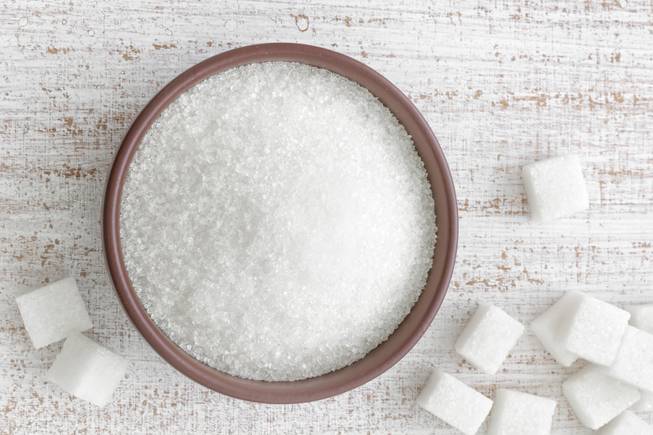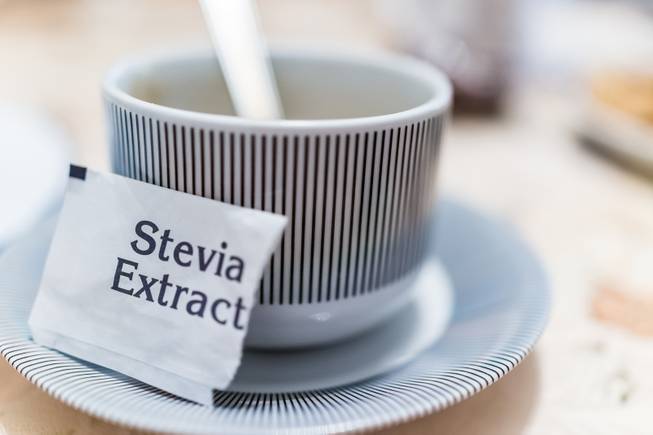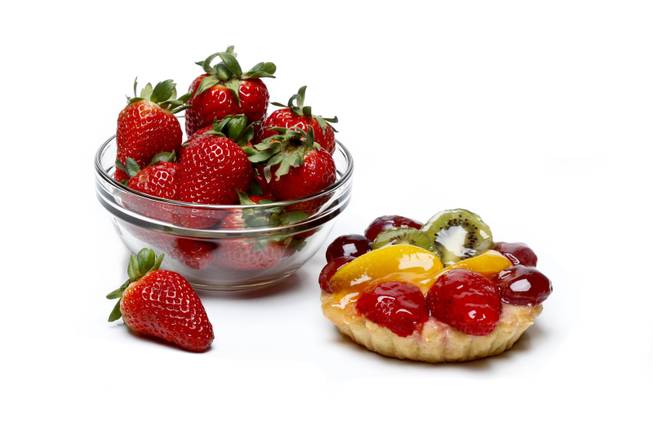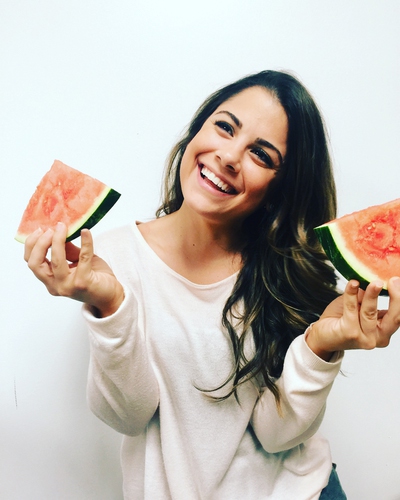
Shutterstock.com
Monday, Jan. 23, 2017 | 2 a.m.
Talk about bittersweet.
Last fall, decades-old internal documents from the sugar industry surfaced, and the implications were grim. A researcher at the University of California, San Francisco dug into the past of the powerful Sugar Association, and findings “suggest that five decades of research into the role of nutrition and heart disease, including many of today’s dietary recommendations, may have been largely shaped by the sugar industry,” according to The New York Times.
The message that has prevailed since the 1960s, when the sugar industry began using what a Mother Jones investigation dubbed “Big Tobacco-style tactics,” has been clear: Fat is the enemy.
For a generation, health guidelines have steered consumers away from foods rich in saturated fats and cholesterol, sparking all kinds of low-fat products that made up for lost flavor with — you guessed it — sugar. Some experts point squarely at the latter when it comes to America’s obesity epidemic.
Rates have skyrocketed since the 1970s. More than 36 percent of adults and 17 percent of youths are obese, Centers for Disease Control (CDC) data show, putting them at high risk of diabetes, heart disease, stroke, cancer, reproductive issues and other ailments.
Sugar, while essential to fueling the body, goes rogue when eaten in excess, turning from quick energy into stored fat. Scientists were looking into connections with heart disease in the ’50s, but the old documents reveal sugar executives paid Harvard researchers to “debunk the anti-sugar studies.” Their work, which downplayed that link and vilified saturated fat, appeared in 1967 in the New England Journal of Medicine (which didn’t require funding disclosures until the mid-’80s). It also set a dangerous precedent. The UCSF study indicates that industry-backed research through the ’60s and ’70s “successfully cast doubts about the hazards of sucrose.”
In response to the current-day bombshell, the Sugar Association said it should have been more transparent but defended its research and the role of industry-funded studies in informing scientific debate. Many scientists aren’t convinced, but the community continues to research and work toward the ever-elusive “consensus” on what’s best for the human diet.
Jointly filed to the U.S. departments of Agriculture and Health and Human Services, the 2015 update to federal guidelines indicates some of the key research areas that need attention, as well as food insecurity and low health-literacy contributing to poor choices.
“Additional research is necessary to improve the scientific foundation for more effective guidelines on individual-level behavior change ... taking into account the social, economic and cultural environments in which they live,” the report reads.
While we wait for definitive answers on the enemies of health, keep in mind that none is more powerful than our ignorance. So let's dig into the whats, whys, hows and thoughtful embraces of sugar.
A DIETITIAN'S TAKE ON SUGAR
Yasi Ansari was studying to be a journalist at UCLA, with the aim of writing about health in order to drive awareness and promote wellness. But when she graduated, Ansari went right back to school at California State University, Northridge, to get her master’s and become a dietitian.
After more than 1,200 hours of clinical rotations, her first “real job” was working with UCLA athletes on plans for optimal fueling, performance and recovery. Today, she’s a performance and wellness dietitian working with Hoag Health/Sodexo in Orange County. She provides inpatient services for those dealing with cardiac issues, diabetes and cancer, as well as those recovering from orthopedic procedures. At the outpatient center, she works with women seeking weight loss and relief from bladder and bowel syndromes.
“In my spare time, I do a lot of education — recently at a dance company — and I enjoy writing for corporate wellness companies and a variety of other health and wellness publications,” Ansari said. “I just love being busy!”
Where should the average person look for guidance on healthy approaches to sugar? There are two places you can check up on the recommendations for sugar. There’s the American Heart Association — I really love that resource — and the Dietary Guidelines for Americans.
The DGA is updated every five years based on the best available science. What changed in the latest version? In 2010, there wasn’t a specific limit on sugar; it was combined with solid fats or saturated fats, and they said in that document to limit solid fats and added sugars to about 5-15 percent of your total calories. The most recent data from the 2015 report has put a specific limit on just sugar: less than 10 percent of your calories per day. The same goes for saturated fats. However, in the updated guidelines, there was more of an emphasis to limit added sugar intake to help prevent chronic disease risk.
Changes can be welcome — like when dark chocolate and red wine became “healthy” in moderation — but what about the recent shift on cholesterol? Eggs were bad, and now they’re good. What do you tell people who get frustrated and don’t know what to trust? Nutrition is constantly changing. One day we’re hearing coffee’s good for us; one day we’re hearing coffee’s not so good for us. But the overall picture, the overall foundation of what your diet needs to look like, hasn’t changed much. Adding variety. Having those fruits and vegetables. Limiting saturated fats. That’s not changing, and it hasn’t changed in a very long time. … Just as nutrition changes every day, every body is very different. So something that works for the vast majority might not work for you. Nutrition is experimental.
How bad is America’s sugar habit? The average American has more than 73 grams of sugar per day, and that translates to about 18-20 teaspoons. That’s a lot. Our recommendation from the American Heart Association is about 24 grams or 6 teaspoons of sugar per day for women, and 36 grams or 9 teaspoons for men. When 33 grams of the 73 is coming from one soda, you can really show people that most of their sugar intake is coming from these liquid beverages when you could be more filled up with whole grains and fresh fruit and still be at less than your daily limit.
Do you think the link some research finds between excessive sugar consumption and certain chronic disease is fair? I’ve been working with a lot of people who are at risk for breast cancer, at risk for ovarian cancer, and they come to me and ask: ‘Is sugar the culprit?’ And I tell them, it’s not that there’s a direct link from sugar to you developing a chronic disease; it’s the overall picture. Are you eating so much sugar that it’s contributing to weight gain? It’s the obesity. It’s the unhealthy eating patterns. It’s the decrease in exercise. It’s not just one thing that causes this increased risk.”
Do you recommend trying to cut all carbs? I don’t want people to be scared of carbohydrates. It’s the main fuel for mental and physical performance, and I try to make it very clear that not all sugars are created equal. … I encourage people to have sugars that are coming from foods that naturally contain it, such as dairy (lactose) or fruits (fructose). And then when you are choosing the whole grains, although some of them have added sugars, they’re made up of a variety of vitamins and minerals and fiber, which slows down the effects that straight sugar has on the body. It doesn’t cause sugar spikes the more nutrients you have.
What about sugar substitutes? Some research indicates they’re about 200-500 times sweeter than actual sugar. That increase in sweetness makes you unsatisfied with regular foods. … Research is still inconclusive as to the effects on weight gain that these sugar substitutes can have. So monitor that, too. It’s not necessarily better for you just because it’s sugar-free.
Is it enough to eat right, or do you have to buckle down and work out? Nutrition and exercise need to come together. If you’re just eating healthy and you’re not getting in any physical activity, then you don’t gain all the health benefits. You really need to be doing both.
Being a dietitian, do you ever break your own rules and eat like a normal human? I have moments where I come home and I’ll eat from a bag of Trader Joe’s rice cakes, lightly salted! And then I’m like, okay, I wasn’t supposed to eat from the bag. I definitely think we’re a lot harder on ourselves as dietitians when it comes to eating certain things. But we’re like doctors, sometimes we don’t always follow what we prescribe. Being a dietitian you know a lot about food — you know too much sometimes. So it might be very annoying going to dinner with a dietitian (laughs), or even dating a dietitian. The thing that I’ve learned that works the most is moderation, literally having a little bit of everything but being aware of what you’re consuming as well.
YASI’S TIPS FOR MAKING HEALTHY CHOICES
• Although both are rich in antioxidants, choose berries over grapes. You can enjoy more berries in one serving, with less sugar and more fiber.
• Starchy vegetables such as corn, peas and potatoes can increase blood sugar compared to their non-starchy alternatives (such as broccoli, cauliflower and mushrooms). Instead of cutting them out, focus on portion size.
• The following sugary foods provide what dietitians call “empty calories”: soda, candy, juice (especially those without pulp that aren’t 100 percent fruit) and other packaged items such as sugar-rich cereals or processed snacks with a long list of ingredients. Instead, look for packaged items with key words such as “whole grains,” “100 percent fruit juice” and “reduced sugars.”
• Outright denial is not a solution. If you’re trying to be healthier but can’t give up certain carbs that are less nutritious, figure out a way to thoughtfully incorporate them. Or if you love dessert, consume treats in small portions and look for those that provide protein and are higher in fiber.
-

WHERE DOES SUGAR COME FROM?
Sugar is a water-soluble carbohydrate found in nearly everything we eat, and it occurs naturally in several forms.
Sugar types
SIMPLE (monosaccharides)
Fructose: fruit sugar
Galactose: milk sugar
Glucose: Derived from glykós, the Greek word for “sweet,” glucose is one of the main energy sources of living things and is found in the sap of plants and the blood of humans (i.e. blood sugar). Molecules not immediately burned as energy can be converted to glycogen and stored in the liver and muscles.
Xylose: wood sugar
COMPLEX (disaccharides)
Lactose: Combo of galactose and glucose found in dairy products
Maltose: Combo of malt and glucose found in barley
Sucrose: This is the sugar you know, refined into perfect granules used to sweeten food. The combination of glucose and fructose results from photosynthesis in plants.
Where does refined sugar come from?
The U.S. is among the world’s largest sugar producers, according to the USDA, thanks to sugarcane and sugar beet production around the country. The industry delivers about 21 million tons of sugar and other sweeteners every year, though sugar crops account for less than 1 percent of cash receipts going to U.S. farmers for all agricultural commodities.
SUGARCANE
Production zones: Florida, Louisiana, Hawaii, Texas
Extraction process: Stalks are pulverized and added to water and lime. The juice is boiled to crystallize the sugar, which is run through a centrifuge to separate syrup. The refining process involves washing, filtering and other types of purification.
Cash receipts in 2015-16 crop year: $1.075 billion
SUGAR BEETS
Production zones: Minnesota, Michigan, Wyoming, Montana, North Dakota, Colorado, Nebraska, Washington State, Idaho, Oregon, California
Extraction process: Beets are sliced and submerged in hot water to create a juice. It goes through filtration, purification and concentration until the sugars are isolated. It’s also boiled and sent through a centrifuge before being granulated.
Cash receipts in 2015-16 crop year: $2.956 billion
-

WHAT ABOUT SUGAR SUBSTITUTES?
Artificial sweeteners
Sweeter than regular sugar, these synthetic substitutes may come from naturally occurring substances, including herbs or sugar itself. They are popular because they add virtually no calories and don’t contribute to tooth decay. Possible links to cancer have been raised over the years, but the National Cancer Institute finds no evidence.
Uses: processed foods and drinks, dairy products, cooking and baking
Includes: aspartame (Equal), saccharin (Sweet’N Low) and sucralose (Splenda)
Sugar alcohols
These carbohydrates are found in certain fruits and vegetables, though they can be manufactured. While they contain calories, the numbers are far smaller than what you find in items made with sugar. If overeaten, they can have a laxative effect.
Uses: processed foods and dental products
Includes: sorbitol and xylitol
Novel sweeteners
These combinations of various sweeteners have novel chemical structures, allowing them to impart sweetness without the carbohydrate load. While the FDA approved highly refined preparations, the jury is still out on whole-leaf and crude extracts.
Uses: topping for prepared foods, drink mixing
Includes: stevia
Natural sweeteners
Don’t mistake the word “natural” to mean these products come raw from nature or are healthier than sugar. Many are processed and refined, and vitamin and mineral content is comparable. So it’s better to choose a natural sweetener based on taste.
Uses: cooking, topping for prepared foods, drink mixing
Includes: agave nectar, honey, molasses, maple syrup, date sugar, fruit juice
-

A doctor holds in his hands a diseased heart which has just been removed from a patient during a heart transplant operation at the Cleveland Clinic in Cleveland.
WHAT DOES SUGAR DO IN THE BODY?
A key energy source, carbohydrates fuel the muscles and nervous system and vital processes like metabolism. That’s why the liver serves not only as a reservoir but also manufactures glucose when needed. Whether you favor a crisp apple or a crispy hunk of sourdough toast, sugars and starches go on the same journey from your mouth to the digestive system, where they're broken down into glucose and other molecules absorbed into the bloodstream.
Blood carries the glucose to cells in need of energy, and the excess is transformed into storable glycogen by insulin pumped by the pancreas. (Other hormones help keep blood sugar regulated, but insulin is the most important.)
So what’s the problem with eating too much?
If your body doesn’t need all the energy from the food you’ve consumed, insulin triggers the liver to turn that extra sugar into storable blood fats known as triglycerides. When you eat too much sugar too quickly, your body responds with even more insulin to lower your blood sugar. This is the dreaded “sugar crash,” also known as hypoglycemia.
The more your body is put through this wringer, the more severe the spikes become and the greater the demand for insulin. If your body builds up a tolerance to the hormone to the point of becoming resistant (which can lead to type 2 diabetes), that’s when organs and overall health are at risk.
Also, sugar is the leading cause of cavities. Glycoproteins stick to teeth and attract bacteria hungry for fructose. Those same bacteria excrete lactic acid, which wears down tooth enamel.
Research is ongoing, but what diseases have been linked to sugar?
The study behind the DGA update asserted that 117 million Americans — about half of all adults — have one or more preventable chronic diseases related to poor dietary patterns and physical inactivity.
On top of that, “a sugar-laden diet may raise your risk of dying of heart disease, even if you aren’t overweight,” according to Harvard Medical School’s health blog, citing a 2014 study by scientists from Harvard, Emory University and the CDC. It found that most Americans eat an unhealthy amount of sugar, raising their risk of developing obesity, type 2 diabetes, hypertension and cardiovascular disease.
A University of Minnesota study pointed out that there is no consensus on how much added sugar is OK to include in a healthy diet, with numbers from major health agencies ranging from a max of 25 percent of daily calories (Institute of Medicine, 2002) to less than 5 percent (World Health Organization, 2015).
What about comparisons to an addictive drug?
Every human cell needs energy. And because the brain has so many nerve cells, it’s the biggest consumer of sugar in the body, demanding half of all that’s eaten. When glucose is in short supply, brain functions such as thinking, learning and memory can be affected due to a decrease in the production of neurotransmitters and an according breakdown in communication between neurons. And related bouts of hypoglycemia can wear down cognitive function and attention span.
So your brain needs sugar, but overdoing it can have consequences.
Animal studies show that sugar consumption can produce symptoms consistent with substance abuse and dependence: craving, binging, tolerance and withdrawal. It's addictive because it releases dopamine and stimulates the pathways of the brain, much like an opioid, and that sensation of pleasure reinforces frequent consumption. One study by French scientists showed addicted rats choosing sugar over cocaine.
A 2012 article in the journal Nature compared sugar with tobacco and alcohol: “It dampens the suppression of the hormone ghrelin, which signals hunger to the brain. It also interferes with the normal transport and signaling of the hormone leptin, which helps to produce the feeling of satiety.”
-

For a blast of nutrients, try baked sweet potato fries.
LEARN TO SPOT SUGAR AND ENJOY IT THOUGHTFULLY
Go back further than a few hundred years, and sugar isn’t really part of the human diet. Found in wild honey and berries, it was an energy source people likely craved even more for its rarity, which back then was a survival tool.
Today, it’s a slippery slope. The New York Times reported that sugar was present in about 75 percent of all packaged food consumed in the U.S., with the average person taking down as much as half a pound a day. And refined sugars are super-potent, as they’ve been stripped of the water, fiber, minerals and vitamins that slow absorption and combat spikes.
When picking fruits, vegetables and other carbohydrates, you should always look at the bigger nutrient picture, because some foods high in sugar also pack elements that promote health.
Popular produce items, in order of highest sugar content per cup
Lychee: 29 grams + calcium
Fig: 27 grams + fiber, potassium
Mango: 23 grams + potassium, fiber, vitamin C, vitamin A
Cherry: 18 grams + fiber, vitamin A, vitamin C
Grape: 15 grams + fiber, antioxidants
Beet: 9 grams + potassium, fiber, vitamin C
Pea: 8 grams + fiber, vitamin C, vitamin A
Strawberry: 7 grams + vitamin C
Blackberry: 7 grams + antioxidants
Raspberry: 5 grams + fiber
Carrot: 5 grams + vitamin A
Sweet corn: 5 grams + fiber, vitamin C
Zucchini: 4.9 grams + potassium, vitamin C
Cranberry: 4 grams + antioxidants
Red pepper: 3.8 grams + vitamin C
Potato: 2.7 grams + potassium, fiber, vitamin C, vitamin B-6
Red cabbage: 2.5 grams + potassium, fiber, vitamin C, vitamin A, vitamin B-6, calcium, iron, magnesium
Broccoli: 2.5 grams + potassium, fiber, vitamin C, vitamin A, vitamin B-6
Cauliflower: 2.2 grams + potassium, fiber, vitamin C, vitamin B-6
Avocado: 1 gram + healthy fat
• • •
Members of the starch family, in order of most nutritious to least
Because the body breaks down starches into sugar for energy use or storage, your daily intake should account for foods high in carbs that will contribute to your sugar supply.
Beans: High in fiber, plant-based protein, nutrients and antioxidants, beans are the exemplary starch.
Whole grains: Quinoa is your winner here, a complete protein with lots of potassium and essential amino acids. Oatmeal and barley are good, too, as they can help lower cholesterol.
Potatoes: Potatoes do have a high glycemic index, meaning they raise blood sugar faster than other veggies. However, they’re loaded with potassium and fiber, a controller of blood sugar by slowing the body’s breakdown of carbs. Sweet potatoes are better, as they’re lower in calories and carbs and higher in fiber, though they offer less protein and more sugar.
Refined starches: The process of refining strips away layers of nutrients and fiber so only the starchy center remains in such foods as white rice and white flour.
Empty carbs: Typical culprits are white breads and cereal not made with whole grains and coated in added sugar.
A spectrum of starches
Black beans: 3.9 grams sugar, 116 grams carbohydrates + fiber, potassium, iron, magnesium, vitamin B-6, calcium
Quinoa: 0 grams sugar, 17 grams carbohydrates + protein, potassium
Oats: 0 grams sugar, 103 grams carbohydrates + protein, fiber, magnesium, iron
Potato 1.7 grams sugar, 37 grams carbohydrates + vitamin C, vitamin B-6, potassium, fiber
Sweet potato 6 grams sugar, 27 grams carbohydrates + vitamin A, fiber, vitamin B-6
Brown rice: 0.7 grams sugar, 45 grams carbohydrates + magnesium, modest protein
White rice: 0.1 grams sugar, 45 grams carbohydrates + modest protein
White-flour tortilla: 0 grams sugar, 25 grams carbohydrates + modest protein
-

Do you know how much added sugar is in the tart, versus the naturally occurring sugar in the plain fruit?
THE LURKING THREAT OF ADDED SUGARS
Is there a health difference between naturally occurring and added sugars? Chemically speaking, no. The scientific consensus is that the effects on energy-regulating hormones are the same.
But a 2015 study in Critical Reviews in Clinical Laboratory Sciences (embargoed in full form until February) weighs in on the “controversial topic” of sugar’s impact on health, asserting that both evidence and lack of evidence allow the controversy to rage on.
The study’s abstract states: “It will be very challenging to obtain the funding to conduct the clinical diet studies needed to address these evidence gaps, especially at the levels of added sugar that are commonly consumed. Yet, filling these evidence gaps may be necessary for supporting the policy changes that will help to turn the food environment into one that does not promote the development of obesity and metabolic disease.”
What is the dietary guideline on added sugars?
Americans get 13-17 percent of daily calories from added sugars. That’s down from 35 percent in 2010, though most health agencies recommend an even lower percentage. While they don’t agree on an exact number, the 2015 Scientific Report of the Dietary Guidelines Advisory Committee reset the figure to less than 10 percent.
That matched the then-controversial 2004 recommendation of the World Health Organization and the Food and Agriculture Organization of the United Nations, though the WHO in 2014 updated the guideline to less than 5 percent.
DGA findings:
• “On average, the U.S. diet is low in vegetables, fruit and whole grains and too high in saturated fat, sodium, refined grains and added sugars.”
• “Added sugars should be reduced in the diet and not replaced with low-calorie sweeteners, but rather with healthy options.”
American Heart Association's recommended daily limit on added sugars:
• 9 teaspoons (36 grams or 150 calories) for men
• 6 teaspoons (24 grams or 100 calories) for women
Beware of added sugars in processed foods. The American Heart Association defines them as “any sugars or caloric sweeteners that are added to foods or beverages during processing or preparation.” Sources in the typical American diet range from soft drinks and candy to ice cream.
Nutrition labels list sugars, but the stat includes both added and naturally occurring. To know if your product contains added sugars, look for these ingredients: brown sugar, corn sweetener, corn syrup, fruit juice concentrates, high-fructose corn syrup, honey, invert sugar, malt sugar, molasses, raw sugar, sugar, sugar molecules (dextrose, fructose, glucose, lactose, maltose, sucrose) and syrup.
“Total, Added and Free Sugars: Are Restrictive Guidelines Science-Based or Achievable?”, published in the journal Nutrients, found: “A recommendation of less than 5 percent free sugars or added sugars requires strict compliance to a diet … and does not allow for indulgences.” A single can of soda results in 7.5 percent of your energy coming from added sugar, so you’re done for the day.
Using two USDA databases and the Nutrition Data System for Research, the authors put together this list of added sugars in popular foods.
White bread: 1 gram
Bagel: 5.1 grams
Doughnut: 15 grams
Frosted corn flakes: 15.2 grams
Blueberry muffin: 29 grams
Dried sweetened cranberries: 32.6 grams
Cola: 33 grams
Pizza Hut cheese pizza (2 slices): 4 grams
Chipotle chicken burrito bowl: 4-10 grams
Subway 6-inch turkey sub: 7 grams
In-N-Out double double: 10 grams
Starbucks tall vanilla latte: 27 grams
Healthy swaps
• Instead of a candy bar (20 grams), have five dates (also 20 grams, but also fat-free and packed with fiber)
• Instead of white pasta (1 gram and high in carbs), have zucchini noodles (2.8 grams plus vitamin C and potassium)
• Instead of a small tortilla (1 gram and high in carbs), have lettuce wraps (0 grams plus vitamin A and phosphorous)








Join the Discussion:
Check this out for a full explanation of our conversion to the LiveFyre commenting system and instructions on how to sign up for an account.
Full comments policy